I started collecting and drinking wine more than 25 years ago. My journey into the world of fine wine has taken me to many countries and conversely bottles have found their way to my cellar and table from all over the world. Among all these regions and bottles, Burgundy for me long remained the most impenetrable of all. In my experience occasional revelations have been alternated with frequent dire disappointments. Sounds familiar? Quite.
This is of course supremely frustrating, if only because the heights that Chardonnay and Pinot Noir can soar in Burgundy are largely unmatched in the world. It would be so nice if these wines regularly lived up to their reputations and price tags. Is there any hope of finding ones that do? I think so and I believe that there are two reasons why our chances are improving. One is that more and more producers are moving towards higher quality and greater consistency by employing improved viticultural and oenological practices. Climate change helps a little too. The other is that in recent years more and more detailed knowledge about the wines Burgundy has become available for wine enthusiasts. In this post I will introduce you to the four books that currently are the pillars of my Burgundy library.
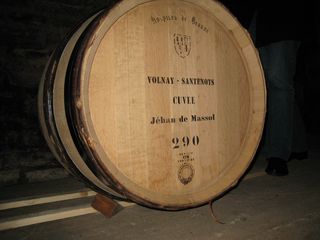
Before I do so however, it is perhaps worthwhile to write a few words about why Burgundy is such a complicated wine region. At first glance you might think it is quite the opposite: two grape varieties on two strips of land from Dijon to Macon. So how bad can it be? Well, very bad actually. Burgundy covers only 27,700 hectares (about a quarter of Bordeaux) but the best bits are divided into some 1,200 individually identifiable vineyards. Most of these will have multiple (sometimes dozens) owners. The geological and climatic differences among these vineyards determine the quality (and price) of the wines produced there on an almost microscopic level. Two examples.
The Aux Combottes vineyard in Gevrey-Chambertin (4.57 ha - that's about 200 metres square) is not a Grand Cru even though it is completely surrounded by vineyards that are (Latricières, Mazoyères and Clos de la Roche). This might seem odd, but the vineyard is in a small dip and the soil is slightly heavier and wetter. So it's only a Premier Cru, albeit a very good one. Another example, from the vineyards of Vosne-Romanée. When you go westward up the hill from the village, you will have passed the vineyards of Romanée Saint Vivant, Romanée-Conti, La Romanée and Aux Reignots before you've even covered 500 metres. Recently I bought a case of very nice Reignots from Arnoux for some € 50 a bottle at auction (yes, that was a good deal!), whereas a bottle of Romanée-Conti, literally 100 metres down the road, will easily set you back € 5,000. Mind-boggling? Perhaps, but it certainly shows that in Burgundy a very short distance can mean a world of difference.
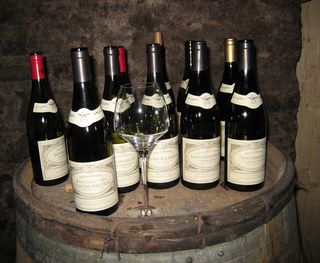
And then of course there's the producers, large in numbers and manifold in philosophies. Again two examples. The famous Montrachet vineyard measures 8 hectares and has 16 owners, 2 of which own about half while the others share the rest. These others' plots are therefore only some 50 metres square on average, producing some 1,500 bottles of wine each (again, on average; some only produce one barrel of wine). These wines are usually at least very good but all are fabulously expensive. Considering the money you're paying, you'll want to acquire one which is truly great and to avoid those that are merely very good. Clearly this will require very detailed knowledge.
Echezeaux' 37 hectares equal an average Bordeaux Cru Classé in size, but are divided among 84 owners which issue some 60 examples of Echezeaux every vintage. Sadly, about half of these are not worth what's being asked for them (Allen Meadows, The Pearl of the Côte, p. 123) Some of the owners of great vineyards in Burgundy are among the best and most progressive (biodynamic) wine producers in the world and others are stubbornly continuing to use pesticides, herbicides and fertilisers when tending their vineyards. "Ce sont tous des Gaulois", to quote Henri Boillot. And so a bottle of Echezeaux may range from extremely average to quite sublime. But how can you tell the difference without first destroying the evidence?
Unless you happen to be Jasper Morris MW, Allen Meadows, Clive Coates MW or Remington Norman and Charles Taylor MW, the answer is: from their books! As you will have gathered from the above, Burgundy requires an extensive amount of hard work if you are going to find out which wines are your favourites in this extremely complicated region. But thanks to these gentlemen, you have the knowledge at your fingertips to initiate you to this wisdom. So let's take a closer look at their books.
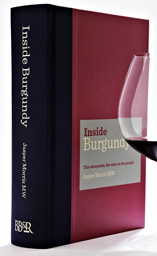
"Inside Burgundy" (BBR press, 2010) from Jasper Morris MW is the most scholarly work ever to have been published about the vineyards and wines of Burgundy. It is beautifully presented and its 650 pages breathe the spirit of a writer who is both deeply passionate and supremely knowledgeable about his subject. Its breadth and depth are unmatched and almost such as to challenge the reader to find errors and/or inconsistencies. There aren't many, but there are some. Contrary to what Morris claims, Fabrice Vigot's Echezeaux comes from Les Rouges du Bas and not from Les Quartiers de Nuits (p. 214). And how large are Ponsots holdings in Chapelle-Chambertin exactly, 0.70ha (p. 127) or 0.47ha (p. 177)? Such comments are querulous however - the book is a true magnum opus. It has not left my side since I bought it. It is important to note that Morris deliberately limits himself to being an objective observer. His aim is not to to point you to the best or even his preferred wines. No tasting notes, therefore. He confers knowledge rather than opinion - although the latter is not lacking for those who have an open eye for it.
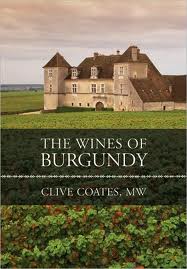
Clive Coates MW has long been recognised as one of the leading Burgundy experts and his book "The Wines of Burgundy" (UCP, 2008) is essential in the library of anyone genuinely interested in the subject. With 875 pages Coates' book is even weightier than Morris's volume, but only 310 pages are dedicated to vineyards and producers and the remaining pages are taken up by tasting notes. These are very useful and to the point, but with 2003 being the latest vintage reflected in the tasting notes, the book is beginning to feel somewhat out of date already. The layout of the book is famously impossible to navigate. Coates isn't shy with his opinions about individual producers and their wines and this is very helpful. Where Morris intentionally leaves the reader somewhat to his own devices in this respect, Coates' book is much more of a wine guide.
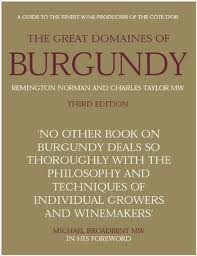
The Great Domaines of Burgundy by Remington Norman & Charles Taylor MW (Kyle Cathie, 2010) presents the reader with very detailed information about the 140 domaines outlined in this book. Michael Broadbent MW writes in his foreword (proudly quoted on the dust cover): "No other book on Burgundy deals so thoroughly with the philosophy and techniques of individual growers and winemakers". These words are true and capture the essential added value of this work. The brief panegyric in the last paragraph of each chapter can sometimes seem slightly hagiographical but perhaps this is inevitable within the format of the book. An essential book of reference.
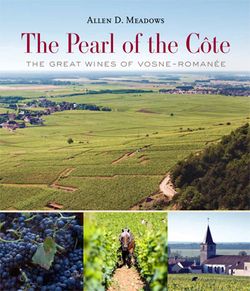
If the previous three books are already for the seriously interested, Allen Meadows' tome about the wines of Vosne-Romanée takes detail to another level yet. The Pearl of the Côte (Burghound Books, 2010) is a full 347 pages about some 230 hectares of vineyards. How it speaks to my encyclopaedic mind! It would be facetious to claim that it is largely irrelevant for those who are not featured in the Forbes 500, but it is fair to say that some of the wines extensively featured in this book are beyond the financial reach of the vast majority of the population of this planet (including me). But who cares - reading about a 1001 hp Bugatti can be fun even if you don't own one! And the information provided about these and also the slightly less unaffordable wines in this village is so accurate and extensive that the book is an invaluable and unique source of information about the fascinating wines of Vosne-Romanée. Understanding the very well documented microcosmos of Vosne, takes you a long way to understanding Burgundy. Not to be missed.
Finally, to quote Allen Meadows about top shelf Burgundy: "you may not get what you paid for, but you certainly will not get what you didn't pay for" (o.c.). Let's hope these four books will help you get your money's worth. I wish you many great bottles!
Xavier Auerbach












